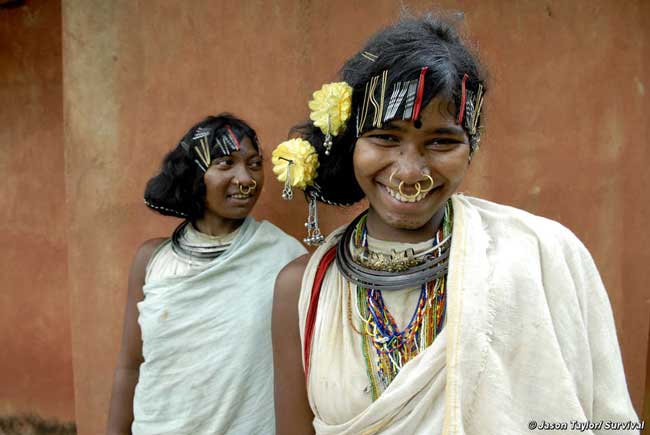The state has the third largest population of Scheduled Tribes in India. […]
Prehistoric Acheulian tools dating to Lower Paleolithic era have been discovered in various places in the region, implying an early settlement by humans. Kalinga has been mentioned in ancient texts like Mahabharata, Vayu Purana and Mahagovinda Suttanta. The Sabar people of Odisha have also been mentioned in the Mahabharata. Baudhayana mentions Kalinga as not yet being influenced by Vedic traditions, implying it followed mostly tribal traditions […]
Source: Source: Orissa – Wikipedia, the free encyclopedia
URL: https://en.wikipedia.org/wiki/Odisha
Date visited: 2 January 2020
Odisha in pre-historic age
Since prehistoric days the land of Odisha has been inhabited by various people. The earliest settlers of Odisha were primitive hill tribes. Although prehistoric communities cannot be identified, it is well known that Odisha had been inhabited by tribes like Saora or Sabar from the Mahabharata days. Saora in the hills and the Sahara and Sabar of the plains continue to be an important tribe distributed almost all over Odisha. Most of the tribal people have been influenced by Hindus and have adopted Hindu manners, customs and rituals. Bonda Parajas of Koraput district are the best example of these tribes.
Several pre-historic sites have been excavated in Odisha since the arrival of Britishers. Kaliakata of Angul, Kuchai & Kuliana of Mayurbhanj, Vikramkhol near Jharsuguda, Gudahandi and Yogimath of Kalahandi, Ushakothi of Sambalpur, Similikhol near Bargarh etc. […]
The name Odia originated from Odra or Udra tribes that inhabited the central coastal belt (Khordha District and Nayagarh District) of modern Odisha. […]
Unlike some other parts of India, tribal customs and traditions played a significant role in shaping political structures and cultural practices right up to the 15th century,[10] when Brahminical influences triumphed over competing traditions and caste differentiation began to inhibit social mobility and erode what had survived of the ancient republican tradition. […]
Source: Orissa – Wikipedia, the free encyclopedia
Address : http://en.wikipedia.org/wiki/Orissa
Date Visited: Thu Sep 01 2011 15:19:45 GMT+0200 (CEST)

Photo © Survival International
“In Rayagada in Odisha, Kondh parents distinguish between dangar patha (mountain learning) and kagaj patha (paper learning). Asked which they prefer, many parents answer ‘both’. This expresses a need deeply felt by Adivasis: literacy, with fluency in the regional language or English, is important; but so is respect for native languages and knowledge systems linked to the land and forest.” – Felix Padel & Malvika Gupta in “Are mega residential schools wiping out India’s Adivasi culture?” (The Hindu, 13 February 2021) | Indian tribal cultural heritage | Odisha | Rayagada by PARI >>
“English newspapers are worse than Hindi on representing Dalit, Adivasi writers.” – (The Caravan, 3 August 2019) >>
Reports in the Indian press | List of periodicals included in this search >>
Search tips
Combine the name of any particular state, language or region with that of any tribal (Adivasi) community.
Add keywords of special interest (music, poetry, dance just as health, sacred grove and biodiversity); learn about the rights of Scheduled Tribes such as the “Forest Rights Act” (FRA); and the United Nations “Declaration on the Rights of Indigenous Peoples”, “Universal Declaration of Human Rights”, “women’s rights”, or “children’s right to education”.
Ask a question that includes “tribal” or “Adivasi”, for instance: “Adivasi way of life better?” (or “tribal way of life worse?”)
Specify any particular issue or news item (biodiversity, bonded labour and human trafficking, climate change, ecology, economic development, ethnobotany, ethnomedicine, global warming, hunter-gatherers in a particular region or state, prevention of rural poverty, water access).
For official figures include “scheduled tribe ST” along with a union state or region: e.g. “Chhattisgarh ST community”, “Himalayan tribe”, “Scheduled tribe Tamil Nadu census”, “ST Kerala census”, “Particularly Vulnerable Tribal Group Jharkhand”, “PVTG Rajasthan”, “Adivasi ST Kerala”, “Adibasi ST West Bengal” etc.
In case the Google Custom Search window is not displayed here try the following: (1) toggle between “Reader” and regular viewing; (2) in your browser’s Security settings select “Enable JavaScript” | More tips >>
Note: hyperlinks and quotes are meant for fact-checking and information purposes only | Disclaimer >>
“The forest was never far away from habitation. For instance, excavations of the settlements at Atranjikhera and Hastinapur, which are not too far from Delhi, have yielded evidence of a large variety of forest trees. The Buddhist Canon states that aside from the village and its outskirts, the rest of the land is jungle. Travelling from one town to another meant going through a forest. Therefore, when in exile, the forest was not a physically distant place, although distant in concept.“ – Romila Thapar (Emeritus Professor of History, Jawaharlal Nehru University) in “Forest dwellers in early India – myths and ecology in historical perspective” | Learn more >>
See also
Adverse inclusion | Casteism | Rural poverty
Childhood | Tribal Children’s Right to Education in India
Demographic Status of Scheduled Tribe Population of India (Census figures 2011)
Fact checking | Figures, census and other statistics
Human Rights Commission (posts) | www.nhrc.nic.in (Government of India)
Search tips | Names of tribal communities, regions and states of India
“What is the Forest Rights Act about?” – Campaign for Survival and Dignity
“Who are Scheduled Tribes?” – Government of India (National Commission for Scheduled Tribes, NCST)